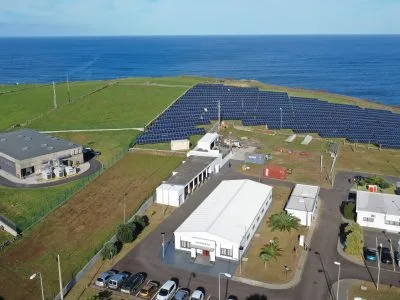How Can Energy Storage Systems Reduce Investment Expenditure for TSOs/DSOs?
Our demand for energy continues to grow – and while generation has kept up with demand, infrastructure improvements have lagged behind.
Bringing grid infrastructure to modern standards is not a simple task. With most power grids many decades old, Transmission System Operators (TSOs) and Distribution System Operators (DSOs) face expensive decisions. Is it more cost-effective to expand and upgrade existing systems or look to new solutions?
Intelligent deployment of energy storage systems can buy several years of time before upgrades and investments are needed (T&D deferral), or even remove the need for new T&D infrastructure altogether. Here are some ways TSOs/DSOs are looking to energy storage to reduce their investment expenditure:
Increased infrastructure lifespan
The fastest way to reduce investment expenditure is to remove the need for it. High peak loads cause thermal strain on grid infrastructure which can shorten its lifespan – a problem compounded in areas where high local temperatures coincide with peak demand.
Energy storage throughout the transmission and distribution system can be used to store electricity for times of high demand – peak-shaving reduces the overall load on the system, making T&D last longer before needing to be maintained or replaced.
Transmission bottleneck and congestion relief
The increased percentage of generation from intermittent renewables causes problems of oversupply. When power generation is at its peak, transmission lines may not be able to transport all of the electricity that has been generated. Due to the variable nature of renewables, the only traditional solution is to accept that some peak power will be wasted or build transmission lines based on peak load.
Deploying battery energy storage at both ends of a transmission line offers an alternative solution. This is the key component of French national grid operator RTE’s RINGO project. Batteries on the supply side store the excess power so it can be transported at times of lower congestion, batteries on the demand side store any transported power that is surplus to requirements. RTE estimate that 30% more energy will be ‘transported’ without the need of any additional pylons.
Improved integration of distributed energy resources (DERs)
Large-scale renewable generation is not the only cause of challenges for TSOs and DSOs. The rapid and growing adoption of small-scale renewables such as residential solar have changed the top-down nature of electricity transmission and distribution.
A traditional grid would look something like this – centralised, orderly, predictable, with power flowing in a single direction.

Source: EDSO for Smart Grids
Today’s grid – with the inclusion of distributed energy resources (DERs) – looks more like this.

Source: EDSO for Smart Grids
The decentralised and multi-directional nature of today’s grid means traditional methods fall short – as mentioned above, forcing DSOs to choose between excess waste or overcapacity.
Energy storage units in conjunction with smart grid operation allows tens, hundreds and even thousands of DERs to work in unison, without the need for additional distribution infrastructure. The combined small-scale resources are even able to operate as a virtual power plant, providing grid ancillary services without building any new generation assets. These virtual power plants are already being rolled out in Australia, Germany and the United Kingdom.
Supplying remote communities
Ensuring reliable power supply to remote communities has long plagued DSOs. Long distances, inhospitable terrain, dangerous weather conditions all combine to make infrastructure investment expensive, maintenance difficult and power outages frequent. Energy storage alone or combined with solar power offers a cost-effective alternative.
Nantucket, an isolated island in Massachusetts, USA, turned to energy storage rather than add a third undersea transmission cable. As the island’s population surges from 10,000 during most of the year to five times that number in the summer months, the combined cable capacity of almost 70 MW was just enough to meet the peak demand of 50 MW. However, operators National Grid expected a third transmission cable to be required within the decade. The addition of battery storage both removes the need for the additional cable and provides backup if one of the existing cables were to be damaged.
If you want to know more about this and other topics directly from end users of energy storage technologies join us at one of these annual events: The Energy Storage World Forum (Grid Scale Applications), or The Residential Energy Storage Forum, or one of our Training Courses.




